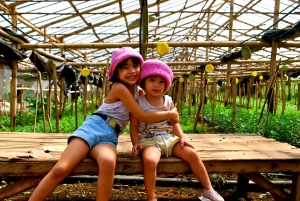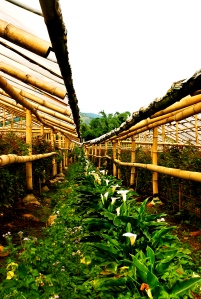This is the 3rd of a series on Backyard Farming. This article will discuss how you can grow your garden. We offer you tips on composting and using fermented fish waste, and also Mulching.
Remember that you need healthy soil. You don’t feed the plants. You feed the soil. Thus, the key to having vibrant plants would be to have fertile soil. And feeding the soil means that you enrich it with organic matter or compost. In the farm we do this by: (1) Composting; (2) using Fermented Fish Waste; (3) Applying Biodynamic Preparations; and (4) practicing Mulching.
COMPOSTING
Note that you will have to start composing way before you plant. Compost will take 2 months to mature. Biodynamic or organic compost can replace any chemical fertilizer. Biodynamic compost especially builds the soil and reduces pest attacks. Your compost will increase your yield and improve the life of your soil in the long term. Our flowers and vegetables derive more than 90% of its nutrition from our compost. To learn how to make biodynamic compost, please read a previous article here: Biodynamic Composting.
GREEN MANURE
You can also improve your soil’s fertility and texture by growing legumes, and then cutting them and putting them back into the soil or composting them. This is called Green Manuring. These are string beans, baguio beans, monggo or peanuts. These plants have rhizobium, a microorganism that is able to capture nitrogen from the air and deposit it to the roots. We grow these legumes as raw material for our compost, and also in the beds between cropping seasons to improve our soil fertility. To learn more about this process, please visit our old article on Green Manuring.
FISH EMULSION
While planning your garden, you should also prepare fermented fish oil. Our farm uses a lot of fish emulsion as natural fertilizer. Fish emulsion has high organic nitrogen. It’s a great soil conditioner and provides bacterial food to feed the soil’s microherd. Fish emulsion is nothing but a concentrate made of saltwater and fish scraps. We spray the fish emulsion to our plant leaves or pour it in the beds. Here is a link on how to make fish emulsion.
If you want to further enrich your soil with earthworms, here’s a previous article on it: Vermicompost. Earthworms aerate the soil and create worm castings, which contain nutrients, minerals and a lot of beneficial organisms.
After the application of compost and the application of BD 500 to your soil, we recommend mulching.
- Gather the weeds, leaves, twigs you have.
- Can also use rice straw, dried napier grass, wood chips or sunflower leaves.
- Dry them under the sun.
- Grass clippings must be dried and without any seed before application.
- Cover the beds with 4 to 6 inches of mulch. Place the “mulch” on top of the soil and around the base of your plants.




















